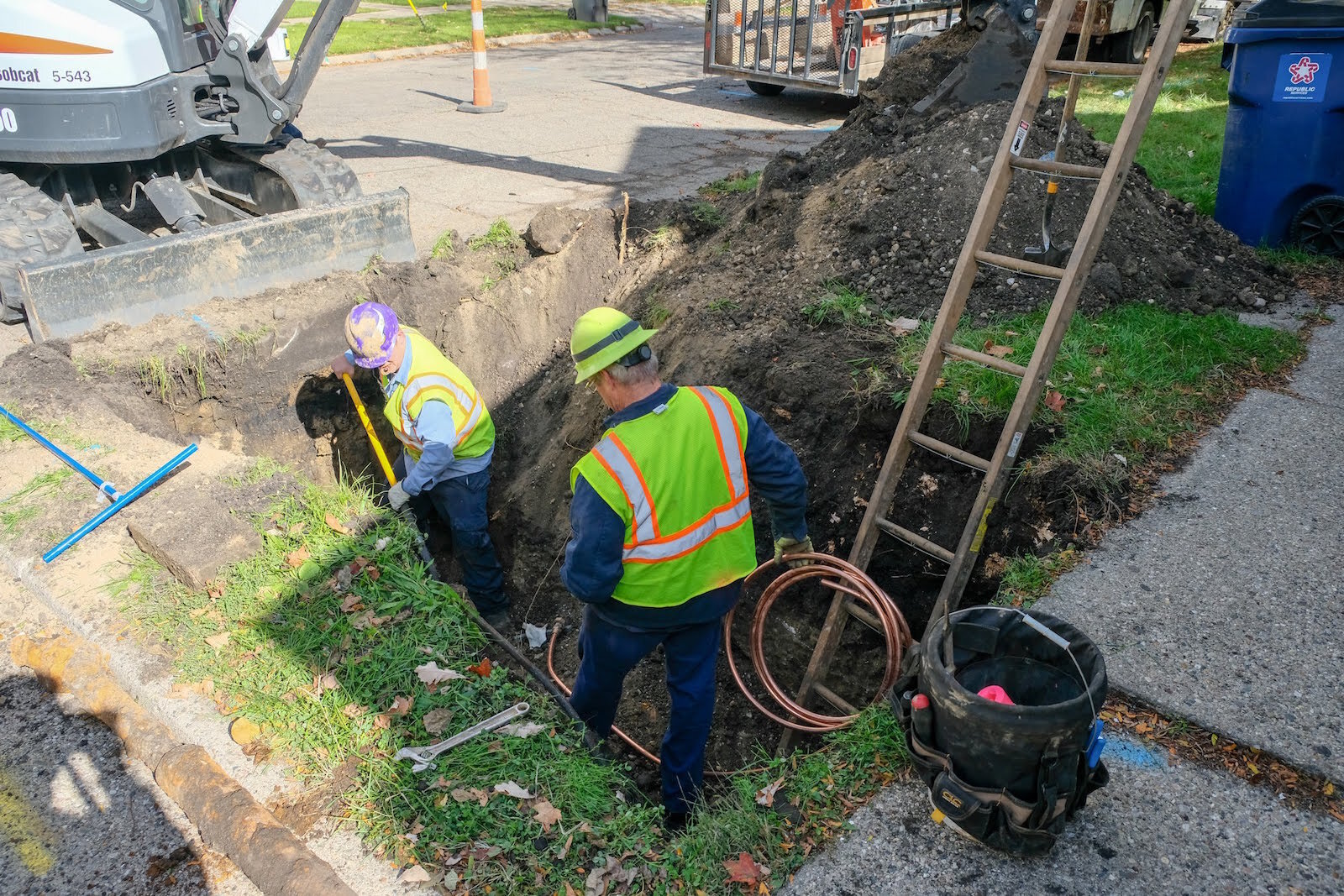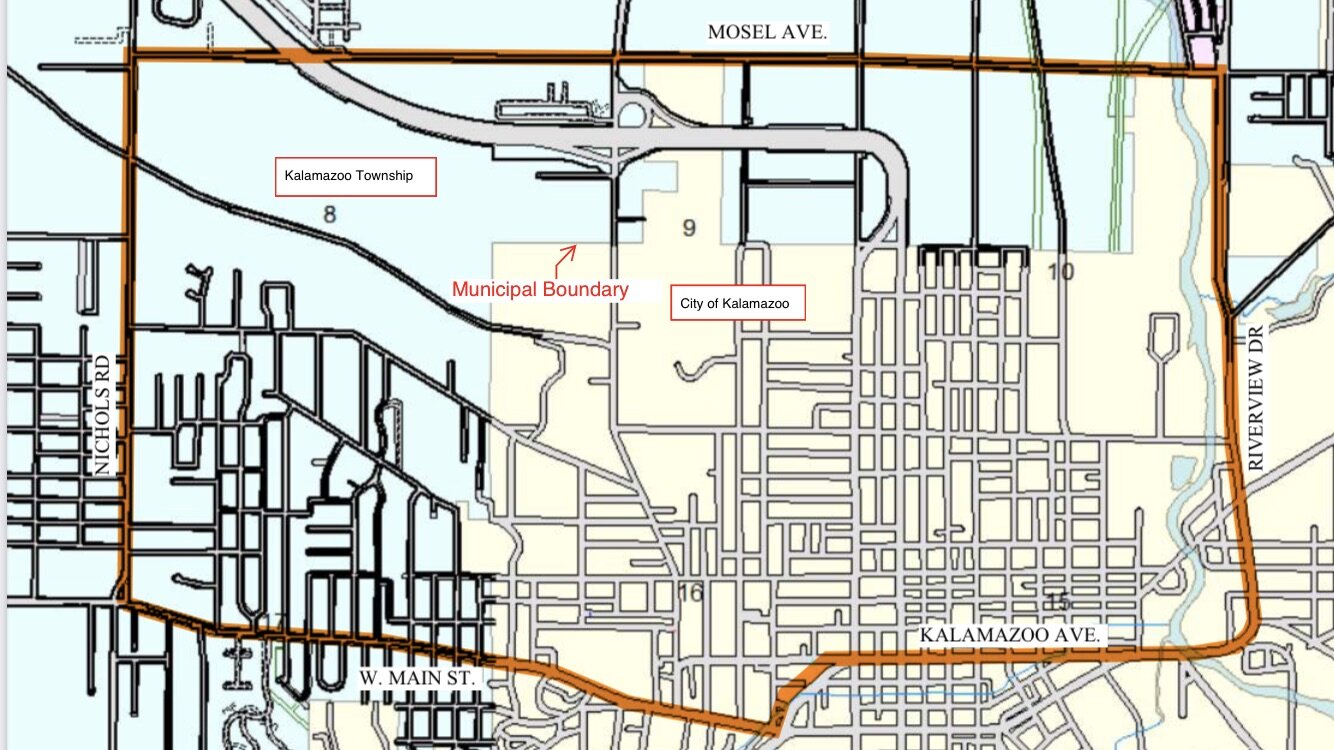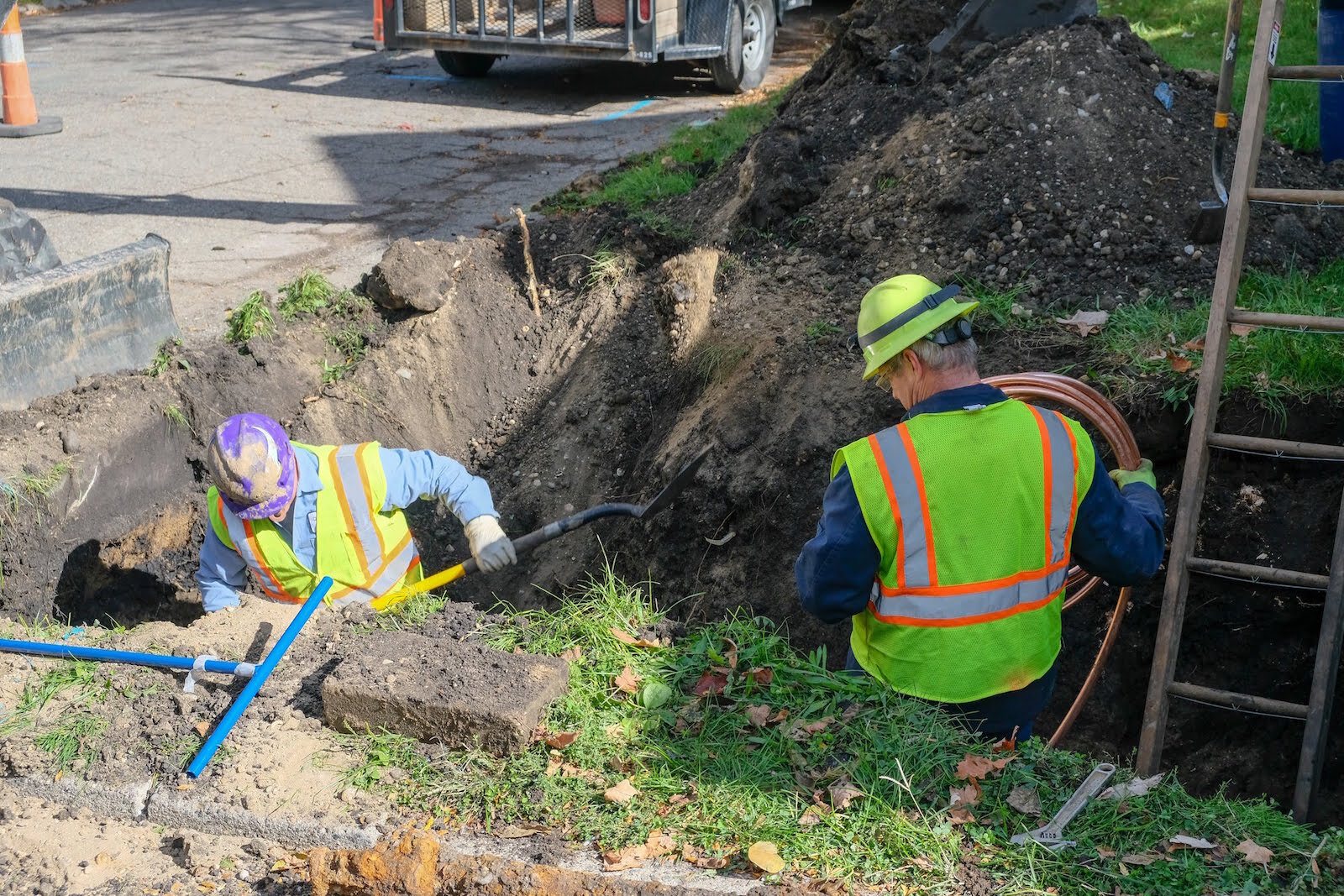The city of Kalamazoo will continue its lead-water removal efforts by replacing 2,000 more in the city’s Northside Neighborhood, the Northwood portion of Kalamazoo Township, and adjacent areas over the next year.
The $ 20 million project, known as the North Kalamazoo Project, is slated to begin after permits are granted and contractors are selected late this year. It should be completed in 2023. The project aims to provide lead water supplies in an area generally north of Kalamazoo Avenue to the township line and between Nichols Road and the Kalamazoo River, according to the city.
“Lead is not a good thing and we need to make sure that all service lines in Kalamazoo are made of copper,” said James Baker, director of public services at Kalamazoo.
Elevated lead levels can cause serious health problems, the city points out in the information it distributes. Infants and children who drink water containing lead can be mentally and physically delayed in their development. Adults who drink lead-contaminated water for long periods of time may develop kidney problems or high blood pressure.
To replace the lead water pipes, the work teams are digging holes next to the houses to replace the non-copper pipes with copper.The use of lead water pipes in Kalamazoo ceased around 1950. And the city has had a program since 1992 to rid its water system of lead supply lines. But there was no plan to get rid of the lines in a set amount of time.
“We replaced them when we were doing road projects,” says Baker. “We will replace them when we come across them. If we would dig up and find one, we would replace it. But we did not have an established program in which we were on the pace and committed to replacing all leadership lines in the city and municipality of Kalamazoo by a certain date. “
Efforts were accelerated after authorities discovered in 2016 that there were around 10,000 copper-free utility lines left in the system. “Non-copper” refers to any pipeline known to be lead, known to be galvanized iron, or made of a material that is not copper, Baker says. It also contains all the service lines that the city is not sure about.
With more attention to replacement, all lead water lines should be removed within 20 years.
“When we started our program at an accelerated pace in 2017, it relied on replacing 10,000 lines,” says Baker. “As of 2017, we’ve done about 500 per year. So we’ve completed about 2,000 non-copper-free replacements.”
North Kalamazoo’s efforts begin with two community members’ briefing meetings on the mountain in April. Zion Baptist Church, 120 Robertson St. Face-to-face meetings are Monday, April 12th, 3pm to 4pm. and 6 p.m. to 7 p.m. on Thursday, April 15.
“This is a big project and we want to make sure that everyone who lives in the project area understands this work, why it is needed and what to expect as the project progresses,” says Baker.
 Work has been carried out to replace lead water pipes in various parts of the city.A utility pipe is a small diameter pipe that connects the plumbing of most homes to a water pipe on the street. In a house with a basement, it is usually the pipe that comes through the foundation wall and connects to the water meter. Assigned work teams dig holes that can be up to 5 feet deep, 10 feet long, and 6 feet wide to replace non-copper colored wires with copper. You will work on the streets next to houses and save on private property, says Baker.
Work has been carried out to replace lead water pipes in various parts of the city.A utility pipe is a small diameter pipe that connects the plumbing of most homes to a water pipe on the street. In a house with a basement, it is usually the pipe that comes through the foundation wall and connects to the water meter. Assigned work teams dig holes that can be up to 5 feet deep, 10 feet long, and 6 feet wide to replace non-copper colored wires with copper. You will work on the streets next to houses and save on private property, says Baker.
According to the city, there are no costs for homeowners. The project is funded in part by the Michigan Department of the Environment, Great Lakes, and Energy’s Drinking Water Revolving Fund, which provides low-interest funding for investments in water utilities. Part of the work is funded from the city’s capital improvement budget. And the Kalamazoo Foundation for Excellence has allocated $ 500,000 per year since 2017 to identify guiding service sharing as a security concern.
“It’s an opportunity to improve infrastructure for the safety of families and everyone in the city,” said Steven Brown, manager of the Foundation for Excellence.
He said the city has fantastic water and the aqueducts don’t seem to pose a threat. But there is still lead in the system, he says: “And if we can get that out of our system and then be a completely lead-free system, all the better.”
 The North Kalamazoo Project aims to provide lead water in an area generally north of Kalamazoo Avenue to the township line. and between Nichols Road and the Kalamazoo River, according to the cityThe North Kalamazoo Project follows the East Kalamazoo Project, in which the city has been working since March and April 2020 to replace 1,350 water pipes in the Eastside Neighborhood and the Eastwood area of Kalamazoo Township. According to Baker, contractors are replacing about six service lines every business day and are on track to complete that work by the end of this year.
The North Kalamazoo Project aims to provide lead water in an area generally north of Kalamazoo Avenue to the township line. and between Nichols Road and the Kalamazoo River, according to the cityThe North Kalamazoo Project follows the East Kalamazoo Project, in which the city has been working since March and April 2020 to replace 1,350 water pipes in the Eastside Neighborhood and the Eastwood area of Kalamazoo Township. According to Baker, contractors are replacing about six service lines every business day and are on track to complete that work by the end of this year.
The North Kalamazoo project is expected to start in March 2022 and be completed in 2023.
The specific project uses contractors to allow the city work teams to continue to cope with their regular workload.
City officials encourage local residents to attend the meeting that best fits their schedule, as the same information is shared at each meeting. Health precautions are taken to protect those attending the meetings. A recording will be made available to community members who do not like to be there in person.
In addition to Northside and Kalamazoo Township-Northwood, residents of the Stuart, West Douglas / Fairmont districts are also affected.
“It’s a great project,” says Brown. “It’s one of those things where something that used to be unimaginable in even our children’s lives is now possible in our own lives. And you don’t really hear that in the US anymore when it comes to infrastructure, because we as a society no longer make these investments as we used to do and as other countries are currently doing. It seems very special, but it’s basically what any functioning civilization should be doing. “
More information about the city’s efforts can be found here.


Comments are closed.